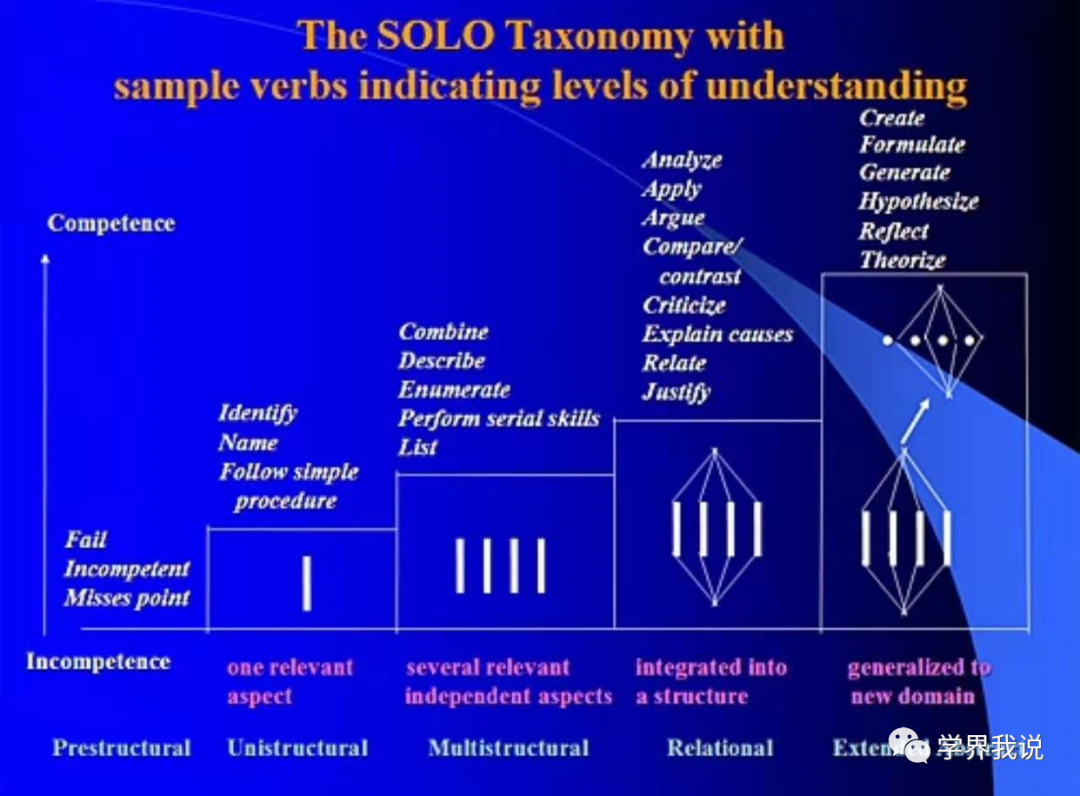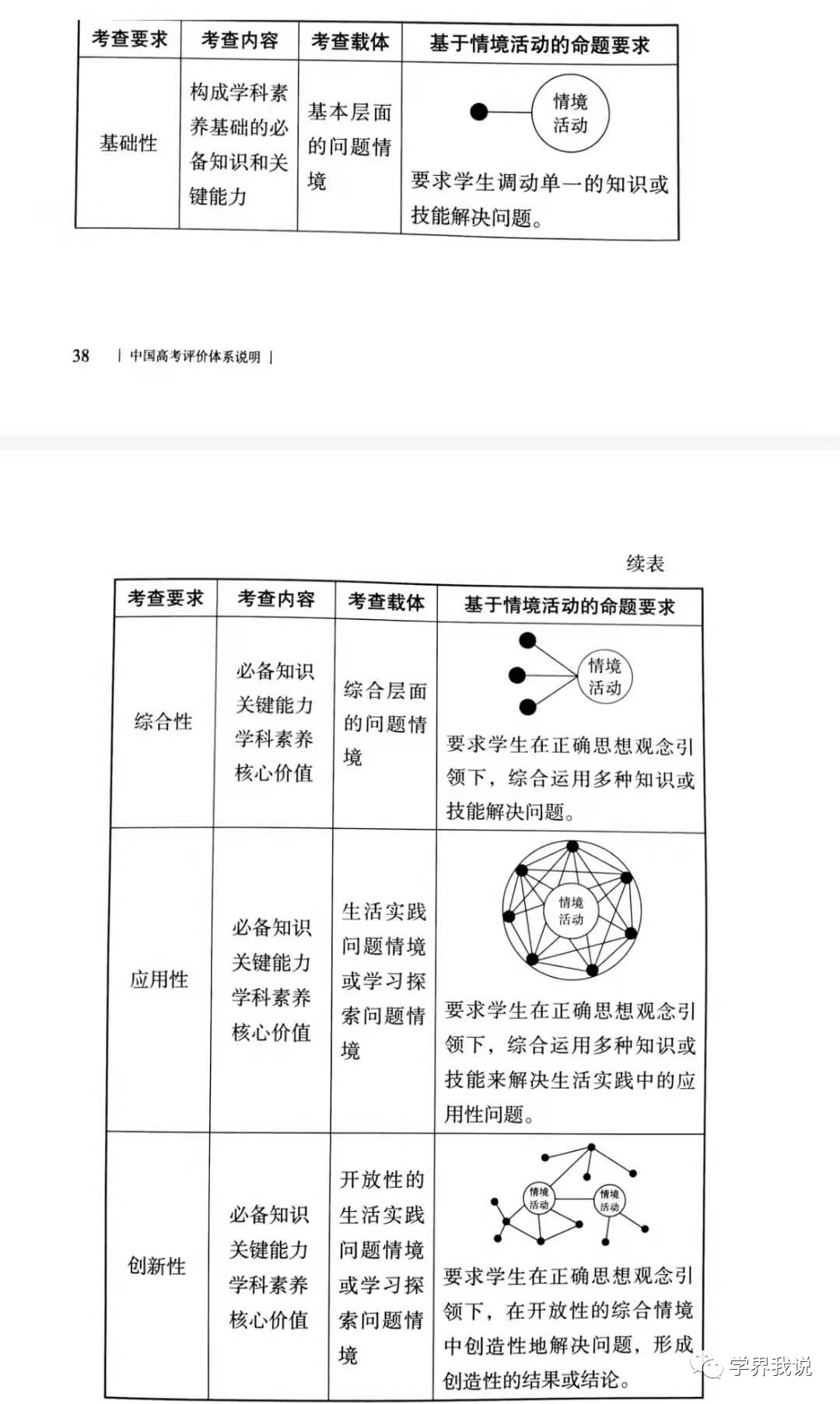
The structure of observed learning outcomes (SOLO) taxonomy is a model that describes levels of increasing complexity in student's understanding of subjects. It was proposed by John B. Biggs and K. Collis and has since gained popularity.
The model consists of five levels of understanding
1.Pre-structural – The task is not attacked appropriately; the student hasn’t really understood the point and uses too simple a way of going about it.
2.Uni-structural – The student's response only focuses on one relevant aspect.
3.Multi-structural – The student's response focuses on several relevant aspects but they are treated independently and additively. Assessment of this level is primarily quantitative.
4.Relational – The different aspects have become integrated into a coherent whole. This level is what is normally meant by an adequate understanding of some topic.
5.Extended abstract – The previous integrated whole may be conceptualised at a higher level of abstraction and generalised to a new topic or area.
下面截图是高考评价体系关于试题情境的图示:

结合SOLO评价关于评价理解能力模型的设计,可知两者有一定的关联性,但又是不同的概念。SOLO评价体系的五层目标侧重的是思维理解能力。我们说测量工具是单向的,高考评价体系当中所标示的“基于情境活动的命题要素”的图示和文字描述没有必然相关。“综合性”和“应用性”命题要素之间的概念含糊不清,两者可以合一。







